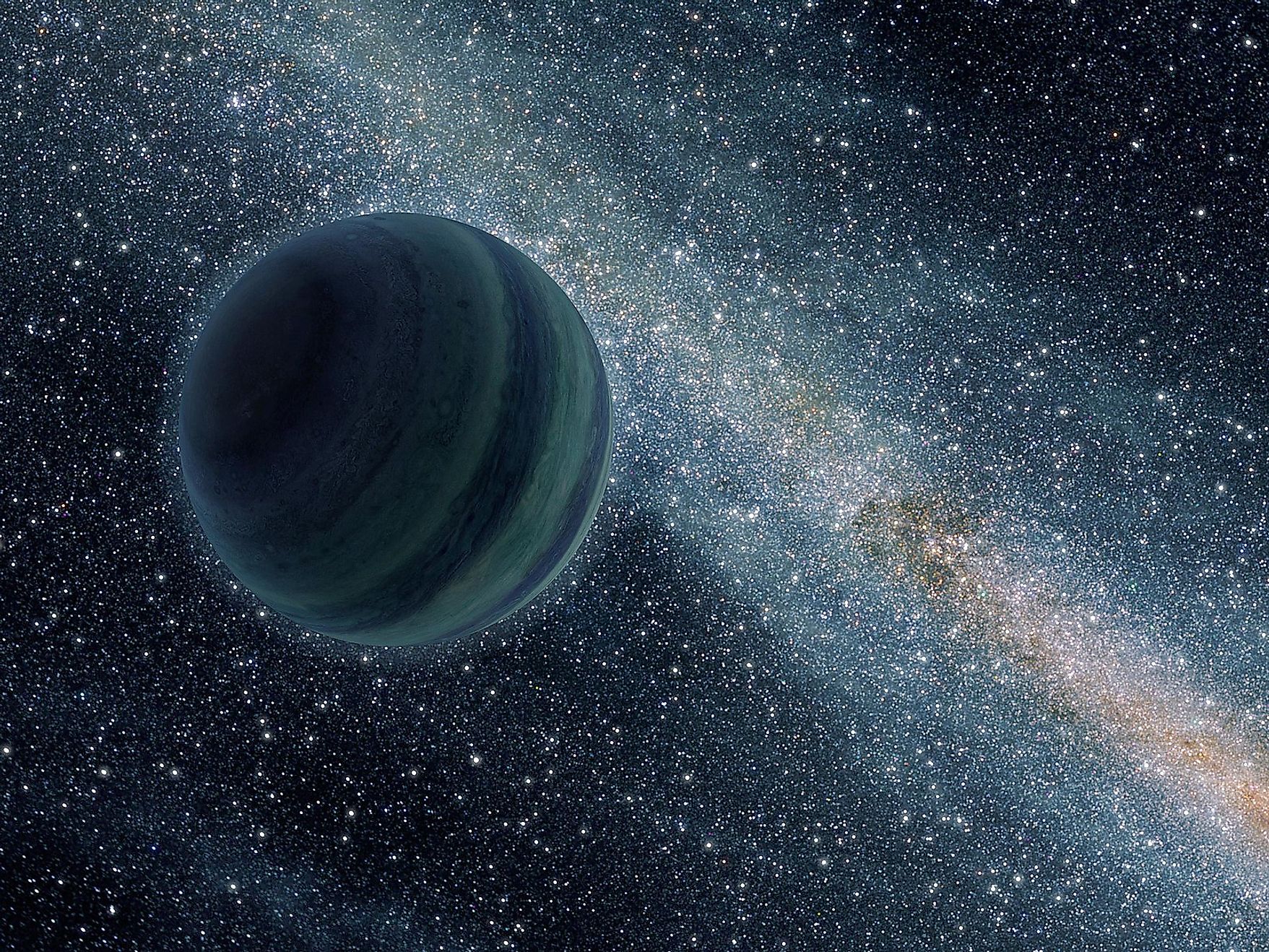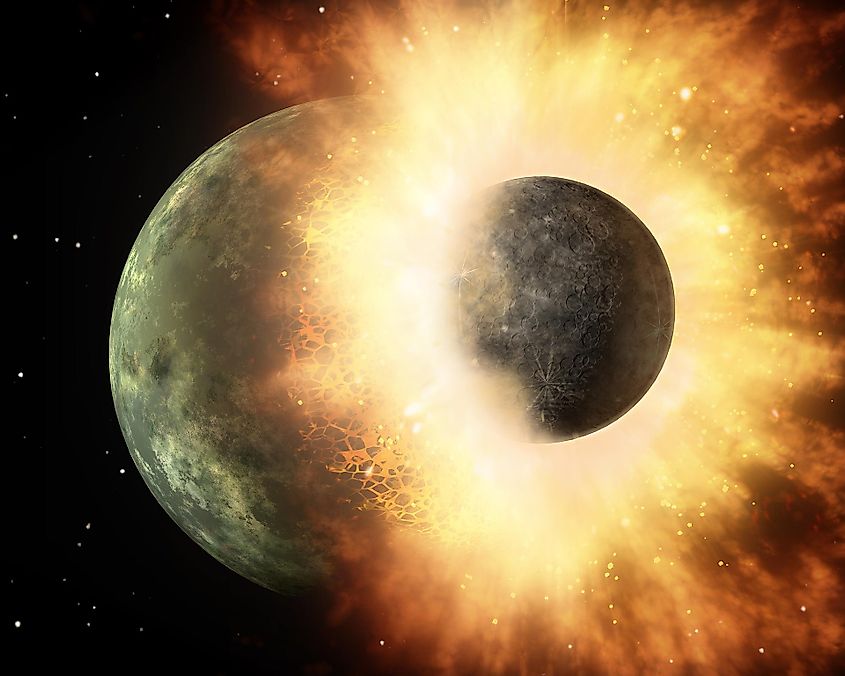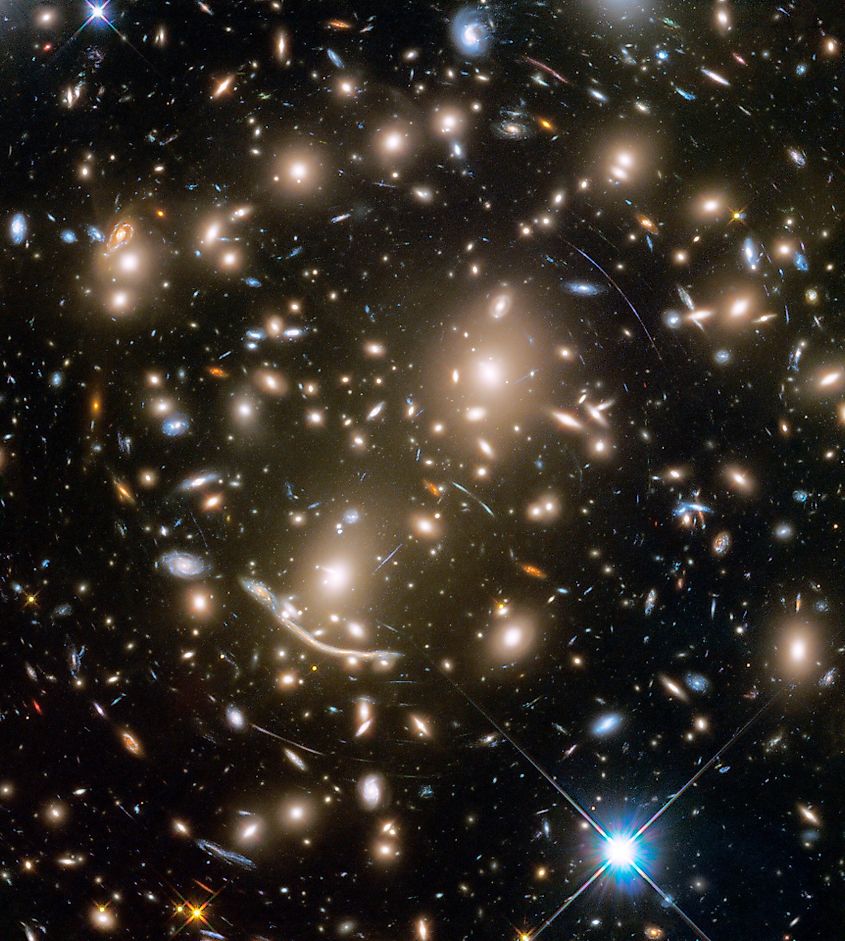
What Are Rogue Planets?
When we think of planets, we generally think of worlds that orbit a star. However, there are many planets that do not orbit a star, and instead, drift through the emptiness of interstellar space. These planets are called rogue planets. What are rogue planets and why don't they orbit a star?
Solar System Formation

It is very unlikely that rogue planets formed in interstellar space. Temperatures are simply too cold for material to coalesce into a planet, and the lack of a star makes it difficult for material to group together. Every rogue planet likely began its life around a star along with other planets. During the formation of a solar system, things are very chaotic. Although most solar systems generally contain less than ten planets, as many as a hundred planets can form during the formation of a solar system. Most of the forming planets will collide with and absorb one another, increasing their overall size and reducing the total number of planets. Some of the forming planets, however, will be flung out of their solar system entirely. This can occur in a number of ways. First, a planet can be gravitationally slingshotted by its parent star out of the solar system. Second, other planets can gravitationally slingshot a planet out of the solar system. Third, a planetary collision can send a planet on a trajectory that flings it out of the solar system. Every solar system has likely produced rogue planets.
How Are Rogue Planets Discovered?

Since rogue planets do not orbit a star, every method used for detecting exoplanets does not work for rogue planets. Rogue planets are tremendously difficult to detect since there is no star for them to reflect light from. The most reliable method for detecting rogue planets is called gravitational microlensing. This method looks for any distortion of space caused by the gravitational pull of a planet. Gravitational lensing is easy to detect for large objects such as galaxies and galaxy clusters, yet it is virtually impossible to detect without extremely sensitive technology. The first rogue planet was discovered in 2011, despite the fact that their existence was predicted many decades prior. To find a rogue planet, astronomers survey vast areas of space looking for gravitational microlensing. As of yet, this is the only method used for rogue planet detection.
How Many Rogue Planets Are There?
Are rogue planets rare or common? Based on the amount of rogue planets discovered, along with models of solar system formation, astronomers estimate that there are two Jupiter-sized rogue planets for every star in the Milky Way. When only considering massive gas giants, there could be over 200 billion rogue planets in the Milky Way. However, this number is likely far higher since gas giants are not the only planets that become rogue. When considering smaller sized worlds as well, there could be up to a trillion rogue planets in our galaxy alone.
Habitability Of Rogue Planets
Without a parent star to supply heat, and the lack of any habitable zone, makes it seems unlikely that life could exist on a rogue planet. However, there is a possibility for life to exist on rogue planets, so long as some conditions are met. It would likely be impossible for life to exist on the surface of a rogue planet. Rather, any lifeforms would have to find refuge in the planet’s interior. If a rogue planet is massive enough to retain its internal heat long enough, it would be possible for that heat to melt ice beneath the crust, forming vast subsurface oceans of liquid water. So long as energy from the planet’s interior can make its way through the planet’s crust, it’s possible that life could exist. Subsurface oceans on rogue planets would be similar to the deepest oceans on Earth. There would no forms of light, and the waters would exist in permanent darkness.











